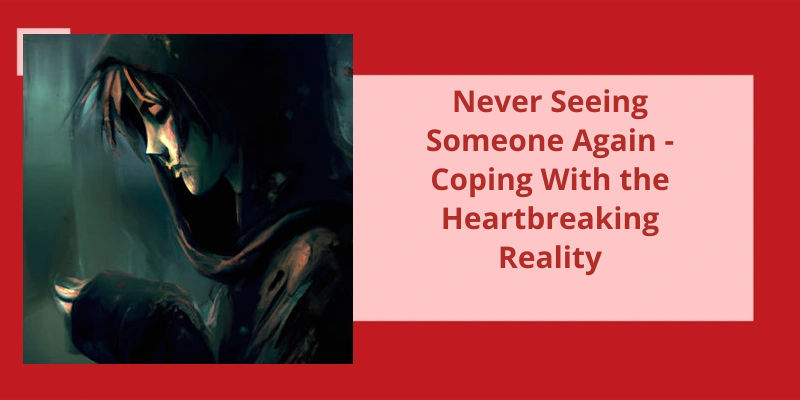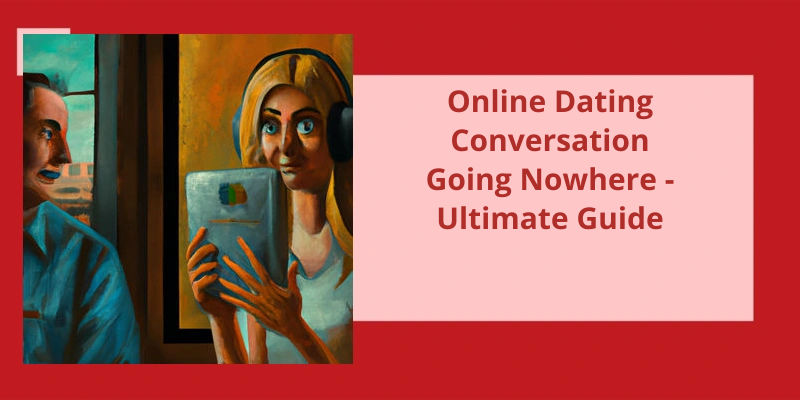Greetings are an essential part of social interaction and can set the tone for the rest of the interaction. When you find yourself in a situation where you need to greet a group of friends, it's crucial to make sure that you do it in a way that's polite, respectful, and welcoming. Saying a simple "Hello" may not suffice in such a situation, and so you should consider using more elaborate greetings such as "Good morning," "Good afternoon," or "Good evening." These greetings not only acknowledge the time of the day but also demonstrate your attentiveness towards the people you're greeting. So let's get started and discover the best ways to greet your friends!
Should You Greet Everyone You Meet?
It’s a simple gesture that can go a long way, especially in making someone feel acknowledged and appreciated. It’s a great way to show that you’re friendly and approachable, and it can help break down barriers between people. Even if you’re in a hurry or not feeling particularly social, taking a few moments to greet others can leave a lasting impression.
In some cultures, greetings are an essential part of daily life. For instance, in Japan, bowing is a way of showing respect and acknowledging a person’s presence. In many African cultures, handshakes are a way to show that you’re happy to see someone and that you’re open to engaging with them. Regardless of where you are, greeting others can communicate that you’re interested in meeting new people and building relationships.
Moreover, greeting others can also lift your own mood. Research shows that smiling and making positive social interactions can improve your overall emotional state. It’s also a way to distract yourself from any negative emotions you may be feeling. By focusing on others, you can take your mind off your own worries and feel more positive.
Greeting others is a simple but effective way to make connections and demonstrate your social skills. So next time you enter a room full of people, take a moment to acknowledge those around you – you never know how much it may mean to someone.
The Different Types of Greetings and When They Are Appropriate (e.g. Handshakes, Hugs, Bows, Etc.) and How They Vary Across Cultures.
- Handshakes: Commonly used in Western cultures to greet people in formal and informal settings.
- Hugs: More commonly used in informal settings or among close friends and family members.
- Bows: Commonly used in East Asian cultures as a sign of respect and humility.
- Kisses on the cheek: Popular among European cultures, this greeting is usually reserved for close friends and family members.
- Wai: A traditional greeting used in Thailand and nearby countries, where the palms are pressed together in a prayer-like fashion as a sign of respect and gratitude.
- Nose touching: A traditional Maori greeting in New Zealand, where the two people touch noses and foreheads together.
- Saluting: A formal greeting used in military and government settings to show respect and obedience.
When addressing a group of people, it’s important to use the right greeting that matches the level of formality. While “greetings everyone” may sound professional, it’s not a common phrase used in everyday conversations. Instead, consider using “hello everybody” in a formal setting or “hi everyone” for a more casual setting. Let’s take a closer look at why these greetings are preferred over others.
Is It Correct to Say Greetings Everyone?
Greetings can be a tricky thing to navigate, especially in situations where you’re addressing a group of people. It’s important to strike the right tone, and to show respect and professionalism, while also being friendly and approachable. One common greeting that many people use when addressing a group of people is “Greetings everyone.”. However, is this really the right way to go about it?
This is a classic and simple way to address a group of people, and it works well in most situations. It’s friendly and approachable, without being too casual or too formal.
Alternatives to “Greetings Everyone” What Are Some Other Greetings That Can Be Used When Addressing a Group of People?
- Hello everyone
- Good morning/afternoon/evening
- Welcome
- Hi folks
- Howdy
- Salutations
- Hey there
- Good to see you all
As you step into the office, you’re faced with the task of greeting your team. While it may seem like a simple task, the greeting you choose can set the tone for the entire day. It’s important to strike a balance between being professional yet approachable. One key factor to consider is avoiding gender-specific language that may not accurately represent the group. Instead, opt for informal yet professional greetings like “Hi everyone,” “Hi team,” or “Hi [department name] team.”
What Is the Best Way to Greet a Team?
When greeting a team, it’s important to consider the context of the situation. Are you meeting them for the first time? Is it a formal or informal setting? Are they colleagues or strangers? These factors can impact how you choose to greet them. In general, a friendly and respectful demeanor goes a long way in making a positive first impression.
In most cases, addressing the team collectively using a universal salutation like “Hi everyone” or “Hi team” is appropriate. These greetings are inclusive and establish an immediate sense of camaraderie. It shows that you value each individual as part of the greater whole. Additionally, it avoids implying authority or hierarchy over others.
In certain situations, it may be more appropriate to refer to the team by their department name. For example, if you’re greeting a specific team in a professional setting or at a meeting, using the department name can help to establish rapport and show that you’re familiar with their work. This also shows that you take the time to prepare and research information about the people that you’re meeting.
On the other hand, gender-specific greetings can come across as exclusive or outdated in today’s diverse workplace. It’s important to avoid using salutations that rely on gender stereotypes or make assumptions about someone’s identity. Instead, opt for neutral terms that are appropriate for all team members, regardless of gender or background.
By taking the time to address everyone equally and with kindness, you can create a positive atmosphere that fosters collaboration and productivity. It also demonstrates your commitment to creating an inclusive workplace culture where everyone is valued and respected.
How to Greet a Team From a Different Culture or Country
When greeting a team from a different culture or country, it’s important to be respectful and aware of any cultural differences in greetings. Research and learn about their customs and norms beforehand. Use a formal and polite greeting such as “hello” or “good morning/afternoon/evening”. If unsure, be sure to ask for guidance or clarification from a trusted colleague.
When meeting someone for the first time, it’s common to wonder what the best way to greet them is. Should you opt for a more formal greeting or something more casual? While there are a variety of options available, it’s always a good idea to err on the side of formality, at least initially. This can help establish a sense of respect and professionalism, which can be essential in many settings. Here are a few commonly used expressions for greeting someone for the first time in a formal context.
What Expression Would You Say to Greet Someone at First Time?
When it comes to greeting someone for the first time, there are a variety of expressions that are appropriate. Depending on the level of formality required, there are different ways to greet someone that will set the tone for the conversation. One classic greeting is simply, “Hello,” which is an all-purpose way to start a conversation. It’s friendly and neutral, making it the perfect choice for both formal and informal settings.
For a more formal situation, such as in a business setting, it’s important to use a slightly more formal greeting. This might include saying, “Good morning,” “Good afternoon,” or “Good evening.”. These greetings are respectful and show that you’re being attentive to the time of day, which can help establish a rapport with the person you’re greeting.
In addition to using a more formal greeting, it’s also a nice gesture to add a bit of personalization to your greeting. Saying something like, “It’s a pleasure to meet you,” is a great way to get the conversation going on the right foot. This statement shows that you’re genuinely interested in making a connection with the person you’re greeting, which can help put them at ease.
If they seem reserved or shy, it’s a good idea to take a more gentle approach, such as saying hello in a soft tone of voice. On the other hand, if they seem enthusiastic and confident, you might try matching their energy by greeting them with a bit more enthusiasm.
Different Cultural Greetings and Customs Around the World
- In Japan, people often bow instead of shaking hands.
- In some African countries such as Kenya and Tanzania, it’s custom to ask about someone’s family before making any business transactions.
- In Thailand, people greet each other with a “wai,” which is placing their hands together as a sign of respect.
- In India, people often say “namaste” while placing their hands together in front of their chest to greet someone.
- In Brazil, it’s customary to give one kiss on each cheek when greeting someone.
- In France, people often greet each other with a kiss on each cheek as well.
- In China, people often nod and smile instead of shaking hands.
As we interact with people in our daily lives, there’s one phrase that transcends cultures and languages when it comes to greeting friends: “Hello.” But is this simple greeting the only way we can acknowledge another person’s presence? In this article, we take a closer look at the different ways people around the world say hello to their friends and acquaintances.
What Word Is Used to Greet Friends?
However, the word used to greet friends can vary depending on the culture and language. For example, in Spanish-speaking countries, “hola” is the common word used to say hello to friends. In Japan, “konnichiwa” is used to greet friends and acquaintances during the day, while “konbanwa” is used in the evening.
In some cultures, such as in parts of Africa, it’s common to use a phrase that translates to “how are you?” as a greeting for friends. This shows that the relationship between friends isn’t just surface level, but deeper and more meaningful.
In addition, the way that the word is delivered can also vary. In some cultures, a kiss on the cheek or a hug may accompany the greeting, while in others, a hand shake or bow may be more appropriate. This again shows that the context in which the word is used is just as important as the word itself.
For example, in Arabic, “sabah al-khair” (good morning) is used in the morning, while “masaa al-khair” (good evening) is used in the evening. This attention to detail shows that the way we greet our friends isn’t just a formality, but an important aspect of our communication and relationship with them.
It can signal respect, affection, and even cultural identity. So the next time you greet a friend, take a moment to think about the word you use and the context in which it’s delivered. It may just deepen your friendship even further.
Source: Ten Different Ways To Say Hello in English | Formal & Casual
Conclusion
In conclusion, greeting a group of friends can be a simple task if done in the right way. The use of basic but polite expressions such as good morning, good afternoon or good evening can go a long way in creating a friendly atmosphere. Adding a personal touch by asking how their day is going can help break the ice and set a positive tone for the conversation.






